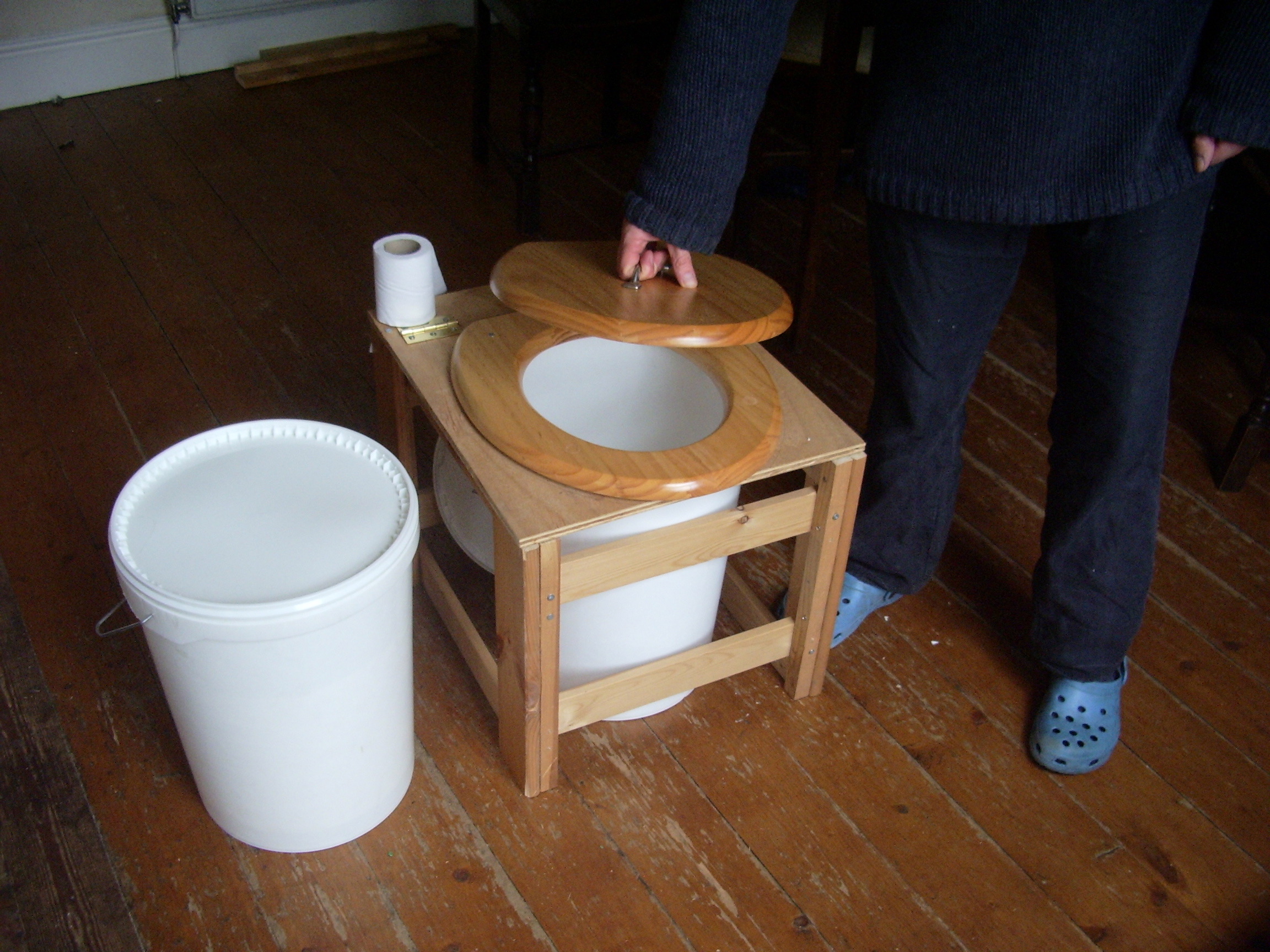The basic idea of any composting toilet is that poop, like other compostable stuff such as food and yard scraps will eventually break down into soil. If done correctly composted poop is perfectly safe to handle and use in your garden. Most people still choose to not use humanure (poop dirt!) in their food growing garden just in case any bad stuff is still lingering.
Everything you could ever want to know about humanure or as I am now calling it, poop magic, can be found in Joseph Jenkin's The Humanure Handbook. I've only read a bit of it so far but there is lots of good info that will get you thinking not only about how you use the toilet but also what you throw in your garbage can.
The main difference between diy toilets and the commercially made type is where the composting action takes place. In a commercially available one your toilet has a built in fan, heater and crank or rake to move about the composting matter. With a diy toilet you're really just collecting the poop to later dump it onto your outdoor compost pile. I'm still hunting around if I can find some more info on building my own more complicated system that would have the elements of a commercially available composting toilet. I'll let you know how thats going later.
To build a simple diy composting toilet you don't need much at all! The basic toilet is a 5 gallon bucket with a seat on top. Most folks build a box around the bucket with a seat on top so it looks a little nicer. With these toilets you can use regular toilet paper and you also use a carbon rich dry material to layer in with the poop such as coco coir, peat moss or sawdust.
If you're feeling fancy you can also add a urine diverter! The reason to separate liquids and solids goes along with another big concern many people have about composting toilets which is smell. Most of my research tells me that they don't actually smell that bad and if it does smell that is usually a clue that you don't have your balance of carbon rich substance to poop quite right. Some people also swear by the fact that separating liquids and solids makes all the difference (though some disagree) with making a less smelly toilet. A urine diverted is pretty much a funnel type device that attaches to the front of the seat so anything in that funnel goes to a different bucket. Another benefit of separating urine is that urine doesn't have to be composted! Being a sterile liquid already, urine can be disposed of the same as grey water such as just dumping it outside (away from anything/one that cares).
This option of toilet wouldn't be horrible if I can find somewhere to live where I can have a poop compost pile. If I'm not living somewhere like that (such as a more urban space) this isn't such a great option and I'd probably have to get a more fancy, commercially made, composting toilet, which I'll tell you about next time!


No comments:
Post a Comment